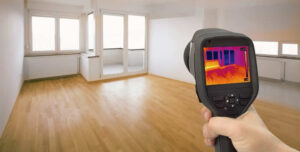Just how do you actually feel about Locating water leaks?

Early discovery of dripping water lines can minimize a possible catastrophe. Aside from saving you cash, it will lessen the worry as well as aggravation. The moment you locate a leak, calling your plumber for repairs is the very best solution. Nonetheless, some small water leakages may not show up. If you can not identify it with your nude eyes, here are some hacks that aid.
1. Check Out the Water Meter
Every home has a water meter. Examining it is a guaranteed manner in which aids you discover leakages. For starters, shut off all the water resources. Guarantee no person will purge, use the faucet, shower, run the cleaning machine or dishwashing machine. From there, go to the meter as well as watch if it will transform. Since nobody is utilizing it, there should be no motions. That shows a fast-moving leakage if it moves. If you detect no modifications, wait a hr or 2 and check back once again. This suggests you may have a sluggish leakage that can also be below ground.
2. Examine Water Consumption
If you identify unexpected modifications, in spite of your usage being the very same, it suggests that you have leakages in your plumbing system. An abrupt spike in your costs shows a fast-moving leakage.
A consistent increase every month, also with the same habits, shows you have a sluggish leak that's additionally slowly escalating. Call a plumber to thoroughly examine your residential or commercial property, specifically if you feel a warm location on your flooring with piping beneath.
3. Do a Food Coloring Test
30% comes from bathrooms when it comes to water consumption. Examination to see if they are running appropriately. Decrease specks of food shade in the storage tank and wait 10 minutes. There's a leak in between the storage tank and dish if the color in some way infiltrates your bowl throughout that time without flushing.
4. Asses Exterior Lines
Don't neglect to inspect your outdoor water lines also. Test faucets by affixing a garden tube. Must water seep out of the link, you have a loose rubber gasket. Change this and make sure all connections are limited. If you've got a sprinkler system, it will certainly help get it professionally checked out and kept yearly. One tiny leak can squander lots of water and surge your water costs.
5. Inspect as well as Analyze the Circumstance
Homeowners must make it a practice to examine under the sink counters and also inside cabinets for any type of bad odor or mold growth. These 2 warnings indicate a leakage so prompt interest is needed. Doing regular inspections, even bi-annually, can conserve you from a major issue.
Examine for stainings as well as damaging as the majority of pipes as well as home appliances have a life span. If you believe leaking water lines in your plumbing system, do not wait for it to intensify.
Early detection of dripping water lines can minimize a prospective disaster. Some small water leakages may not be noticeable. Inspecting it is a surefire means that assists you discover leaks. One small leakage can squander bunches of water and spike your water expense.
If you presume dripping water lines in your plumbing system, don't wait for it to escalate.
WARNING SIGNS OF WATER LEAKAGE BEHIND THE WALL
PERSISTENT MUSTY ODORS
As water slowly drips from a leaky pipe inside the wall, flooring and sheetrock stay damp and develop an odor similar to wet cardboard. It generates a musty smell that can help you find hidden leaks.
MOLD IN UNUSUAL AREAS
Mold usually grows in wet areas like kitchens, baths and laundry rooms. If you spot the stuff on walls or baseboards in other rooms of the house, it’s a good indicator of undetected water leaks.
STAINS THAT GROW
When mold thrives around a leaky pipe, it sometimes takes hold on the inside surface of the affected wall. A growing stain on otherwise clean sheetrock is often your sign of a hidden plumbing problem.
PEELING OR BUBBLING WALLPAPER / PAINT
This clue is easy to miss in rooms that don’t get much use. When you see wallpaper separating along seams or paint bubbling or flaking off the wall, blame sheetrock that stays wet because of an undetected leak.
BUCKLED CEILINGS AND STAINED FLOORS
If ceilings or floors in bathrooms, kitchens or laundry areas develop structural problems, don’t rule out constant damp inside the walls. Wet sheetrock can affect adjacent framing, flooring and ceilings.
https://www.servicemasterbyzaba.com/blog/how-to-detect-water-leakage-in-walls/

I came across that piece of writing on Finding hidden leaks while browsing the search engines. Liked our blog posting? Please share it. Help somebody else discover it. Thank you for your time. Visit us again soon.